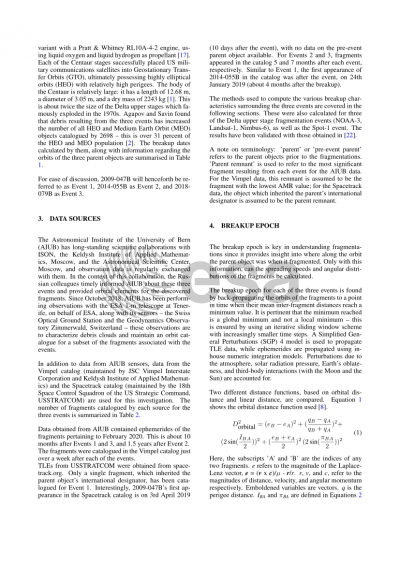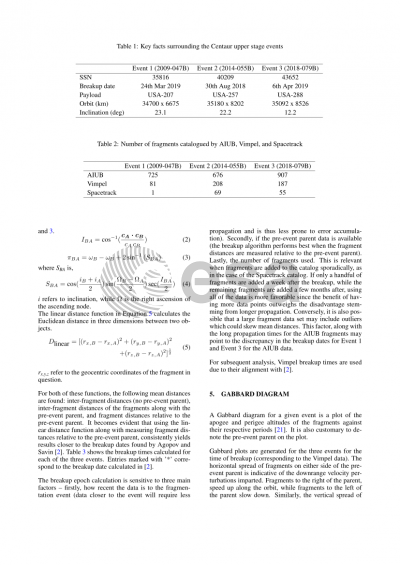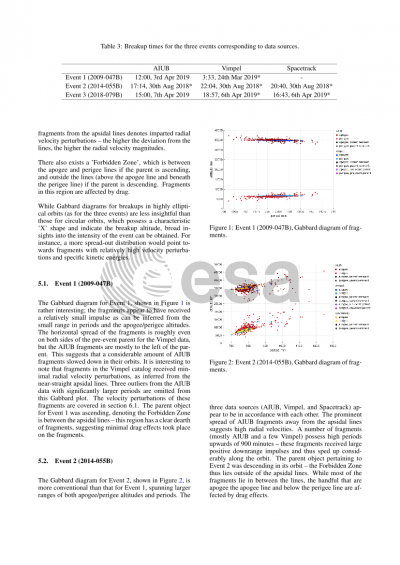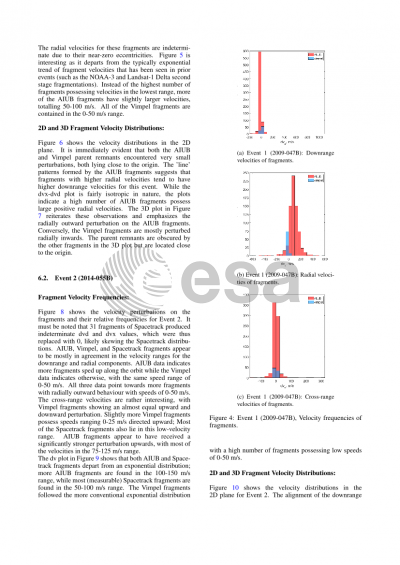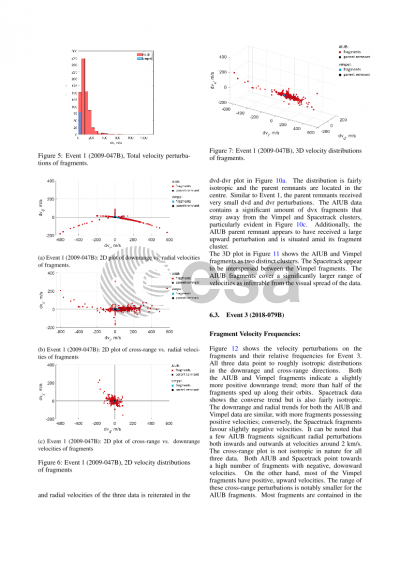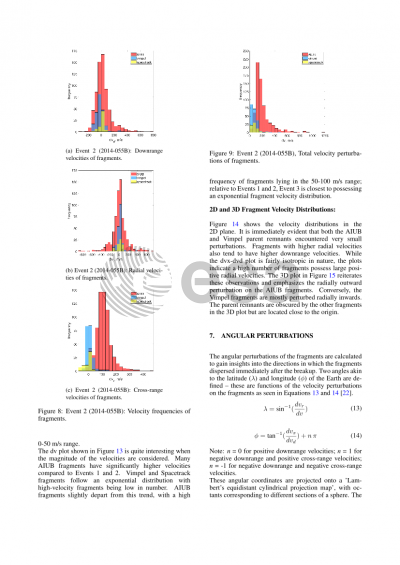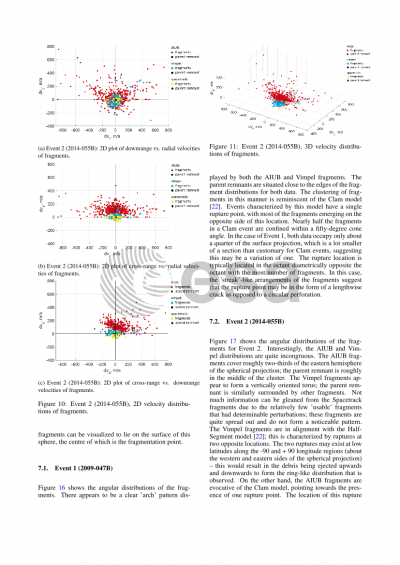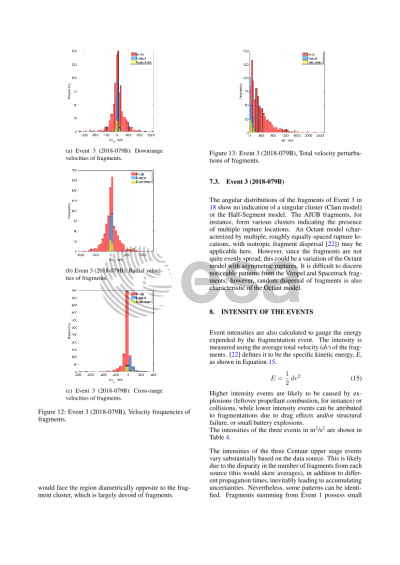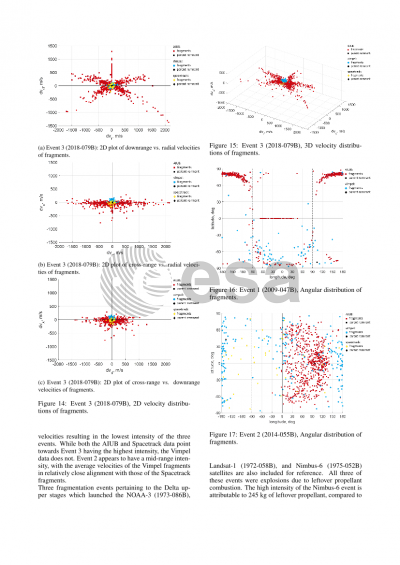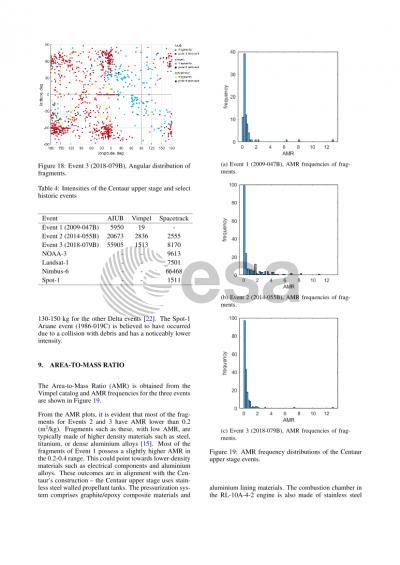Document details

Abstract
In August 2018, and March and April 2019, three fragmentation events occurred. All three events included Atlas V Centaur upper stages. The international designators of the parent objects were 2014-055B, 2009-047B, and 2018-079B. The fragmented objects were United Launch Alliance’s Single-Engine Centaur (SEC) rocket variants and were used to place USA 257, USA 207, and USA 288 spacecraft in Geostationary Transfer Orbits (GTO). Interestingly, these were in relatively high-perigee (6700-8914 km altitude) orbits compared to other orbiting Centaur upper stages. The events were observed by various sensors around the world.
14055B (fragmented August 30th 2018) and 18079B (April 6th 2019) are reasonably reflected in the publicly available TLE catalog — for the 09047B event (March 24th 2019), only one fragment, which inherited the parent’s international designator, has been recorded. 14055B had the first 13 fragments recorded on space-track 147 days after the event. In the following 3 days, 38 more fragments were added for a total of 51 fragments. Similarly, for 18079B, 13 fragments appeared initially, but these were recorded 200 days after the event; two days later, the remaining fragments were added for a total of 51 once again.
The fragments have subsequently been analyzed to characterize the events and gain insights. In the methodology, the orbital characteristics and dynamics of the parent object and the available fragments are studied. Trends are compared to existing fragmentation models. It becomes apparent that the orbital information that is publicly available from USSTRATCOM is insufficient to characterize the events. The sparsity of fragments and the dates at which they enter the catalog require substantial propagation. Analysis has shown that the determined breakup time is extremely sensitive to orbital uncertainties. The Astronomical Institute of the University of Bern (AIUB) has closely observed all three events. The obtained orbital data includes osculating states and associated uncertainties of 676, 725, and 907 fragments respectively for 14055B, 09047B, and 18079B. This data offers considerably more insight into the events.
Methods in the paper are validated using well-documented literature referencing both collisions and explosions. These include events with generally agreeable causes such as the Delta second-stage rocket bodies (RB), along with more anomalous cases like the fragmentation of the Spot-1 Ariane third-stage RB. Furthermore, parallels and differences are noted between the results of the Centaur events and the aforementioned Delta events, namely, NOAA-3, Landsat-1, and Nimbus-6 — all three of which exploded due to leftover propellant combustion. Additionally, comparisons are made to the Spot-1 Ariane event, believed to have fragmented as a result of collision with debris, as well as less understood events like those surrounding the Britz-M RB fragmentations.
The Centaur events being investigated do not seem to align with existing fragmentation models — the dispersion of fragments is not isotropic around the breakup center (Octant model), nor entirely unidirectional (Clam model). The fragments of 18079B, for instance, resemble an unusual form of the Half-Segment model: the dispersion pattern of the fragments resembles a half-torus, with the eastern hemisphere of a spherical projection almost devoid of fragments.
Preview

